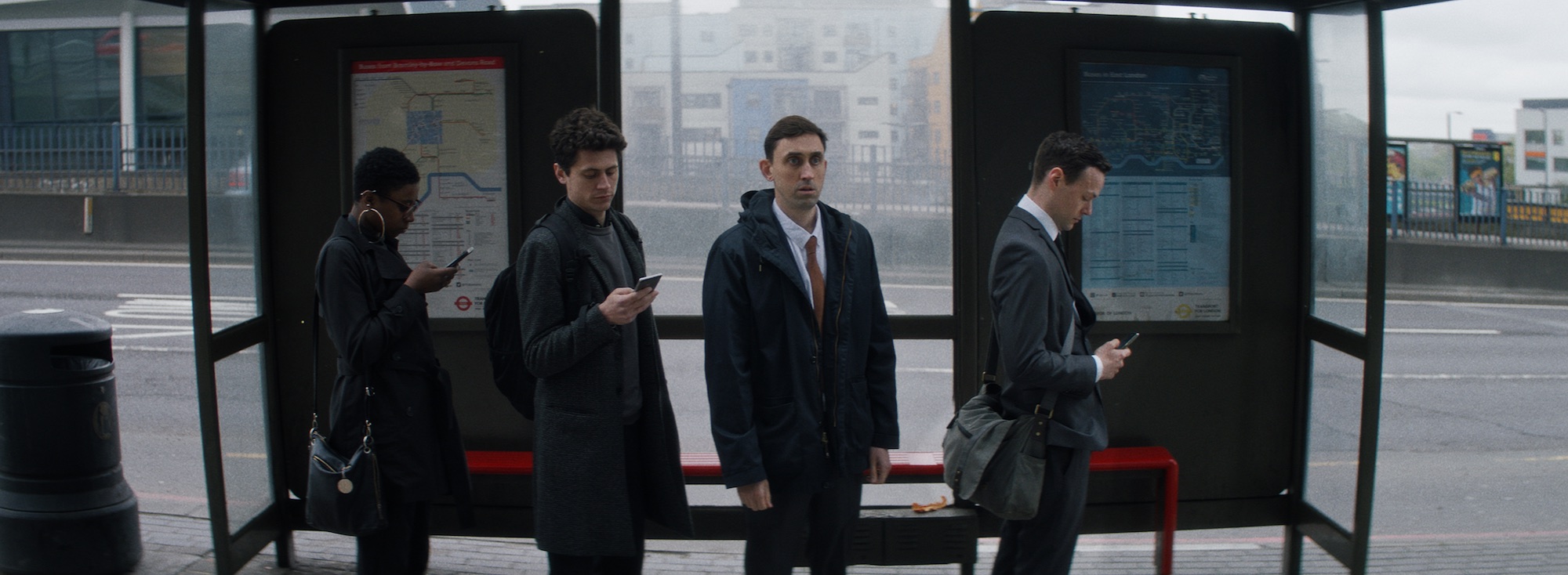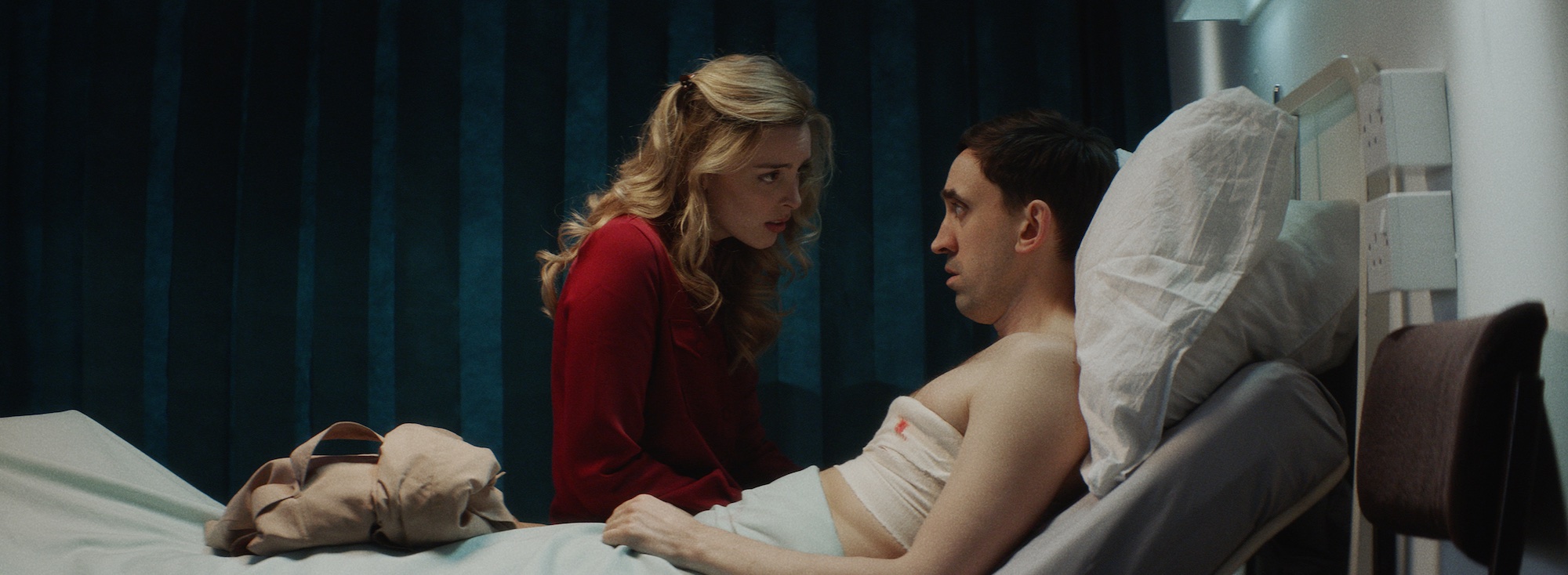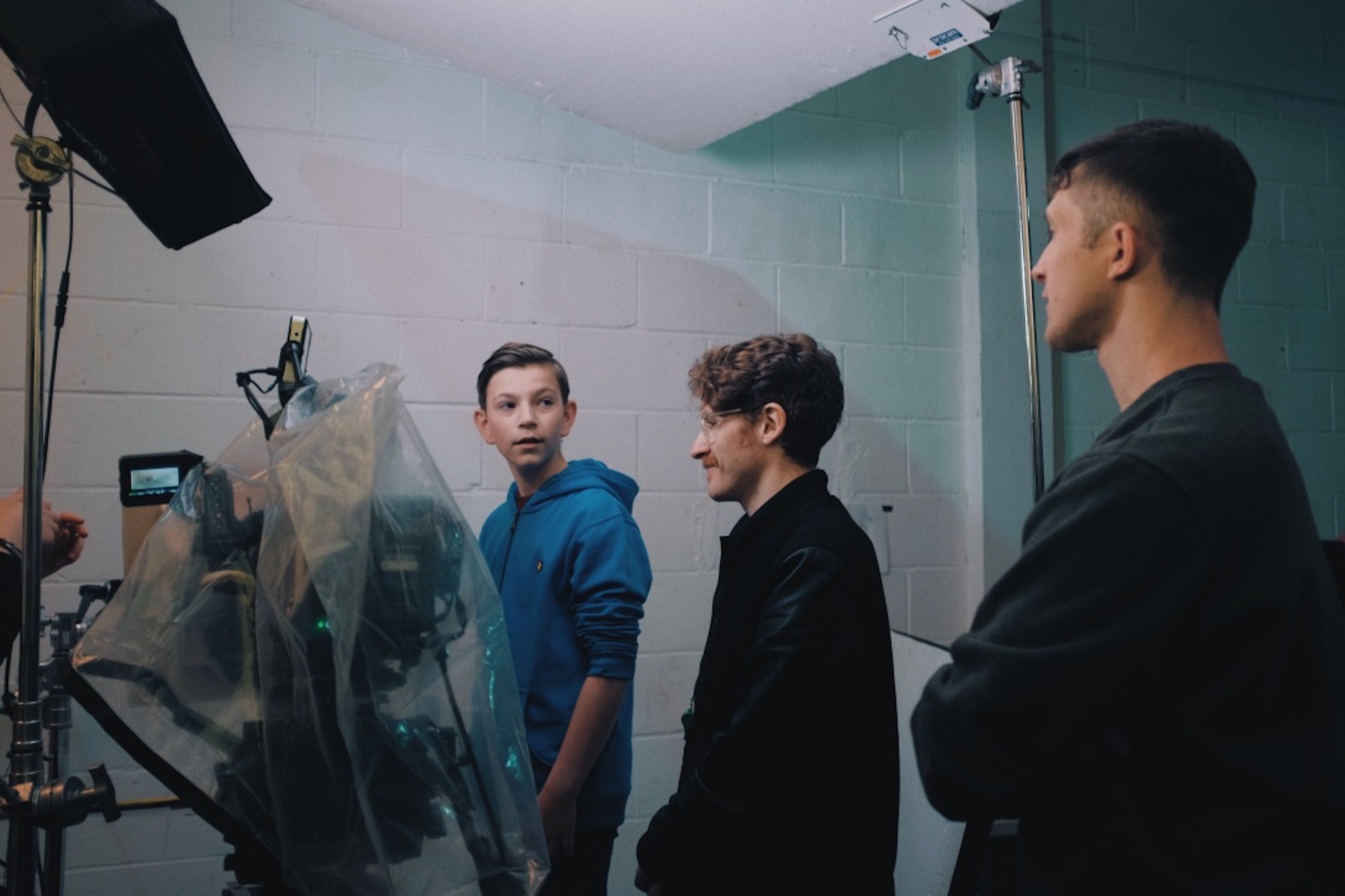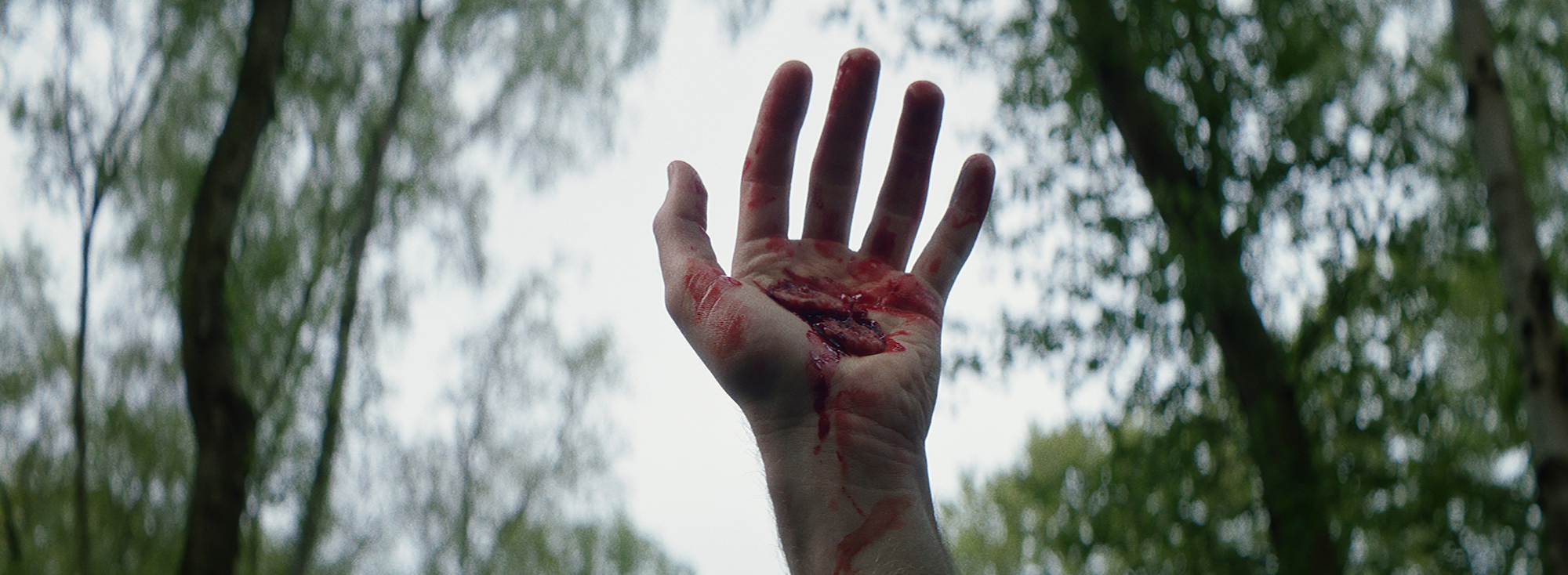
As Ron learns of the ancient traditions surrounding the male anatomy he suddenly finds himself questioning everything he thought he knew about his own body. Back on our pages following recent quarantine comedy Dead Dad (and marking his third DN feature) is Director Bailey Tom Bailey with The History of Nipples. Bailey’s latest release is a squeamish and strangely enlightening tale which is bound to provoke a reaction. We spoke with him about developing the film’s unique concept and held our nerve while he walked us through executing ‘those’ toe-curling scenes.
Where on earth did the idea for a film centred on the history of… nipples begin?
In the National Museum of Ireland in Dublin, there is an exhibit that describes a bizarre Celtic fertility ritual that involved sucking on a King’s nipples and the repercussions when the ceremony failed. I walked away and thought “Huh, the history of nipples”, and it went from there.
I didn’t do anything with the idea for some time, it seemed too silly for me to make, but occasionally I would tell friends about the concept, and their reaction was so good it seemed silly not to. Finally, as my writing consistently began to take the form of dark comedy-drama meets body horror, it was like the perfect vehicle to demonstrate my voice.
Like any considerate writer I inflicted this fear on my protagonist.
Was it always your intention to make it a darkly comic story?
My original idea was to create a mock sex education film but it developed into more of a drama as I unearthed broader themes in the concept. What hooked me was the absurdity of the ritual, but I realised this was a modern perception. The male nipple today is a tiny part of our anatomy, which science deems a useless by-product, yet it was once endowed with divine power. What does this say for the rest of our lives, which were similarly endowed with meaning that has been drained by modern rationalism and Western society’s rejection of faith, creating a crisis in humanities need for purpose. So, like any considerate writer, I inflicted this fear on my protagonist.

After you developed the concept was it a case of reaching out to you usual collaborators?
When working at Somesuch, I met Producers Aaron Z. Willson and Callum Harrison who were interested in producing the short through their company Ground Works along with Associate Producer Mel Giles. We worked with ET Casting and found a brilliant cast led by Joseph Macnab and Lily Woods. We managed to squeeze in one little rehearsal which was mostly about breaking the ice, improvising scenes in character and chatting through everything. I was about a third of the way through a part-time yearlong Meisner (acting) course, so this allowed me to put some of what I was learning into practice.
As we were crewing up I made an animatic of the whole film which was really helpful in getting everybody on the same page and getting people excited about the project. It’s also great for me as a kind of dry run, to try out pacing, etc. This has since become a pretty integral part of my process.
I really enjoyed the overall tone, it’s like normal life with the dramatic dials turned up, how did you find executing the project during production?
We shot for four days on a mix of locations and studio space. The original intention was to make all the scenes feel diagrammatic: life was simplified and observed with cold objectivity. To this end, the set design by Amy Beth Addison was quite minimalistic in our attempt to balance an alienating sense of artifice with something that still looked real.



We tried to keep this tone in real locations through composition. I kept putting Ron centre frame with the wide anamorphic scope isolating him and creating a sense of pressures from the modern world. The film was shot by Spike Morris and lit by Helio Ribeiro. We used Alexa Mini and Hawk V-Plus Anamorphic lenses. We could only afford part of the lens package and being stubborn; I selected all the wide focal lengths.
How was it working with the cast? I’m particularly intrigued to learn what it was like to execute ‘those’ special effects scenes with them?
One of the real joys of this shoot was seeing the cast perform so well. There were lots of brilliant moments from the supporting cast and Joseph gave such an inventive performance, a brilliant mix of humour, fear and authenticity. A fun memory was watching the crew squirm as we were shooting our big SFX moment, provided by the incredible Suzi Battersby, which filled me with confidence about its power. She won Best Make-up for her work at Unrestricted View Film Festival.
The toilet scene was originally supposed to take place in their flat but was moved to a work location because our first day had a lot of quite complex scenes. I was proud that we managed to think on our feet despite the tight schedule and think beyond our meticulous planning.



How much of the original concept and the animatic were changed when you started working through the edit?
I worked with my friend Aurelien Boisson to edit the film, we sat together initially, then he would work alone, and I finished it off when he got busy. While shooting, I covered scenes with limited shots which were a part of the films visual design, but it made pacing a challenge. The most significant change was the opening scene, which was initially in the middle of the film, but we wanted to establish Ron’s problems immediately and create higher tension in those earlier scenes. We ended up cutting out another snippet describing an urban myth about nipples I was told as a kid, which seemed like a detour in the wrong place.
It was really satisfying to see it connect with an audience both viscerally and intellectually.
I have always wanted to make a film that shows what is happening physically inside the characters. In the edit, I revived an earlier idea from the mock-sex education film format of having anatomical animations cut into the story. I spent a while designing them and mocking them up, but they just didn’t fit what the film had become. Some final clean-up and compositing were required in After Effects, and I took the job on myself, which was a steep learning curve, but the skills have served me well in subsequent projects. The images were finished by Colourist Myles Bevan at Time Based Arts.
Meanwhile, Berry Cookman from Wave Studios created our sound design and mixed the film. I have fond memories of him topless, it was messy, and butchering a leg of lamb in the foley booth while I ate too many free sweets. I’m sure everyone who works in a Soho post house must have diabetes. We based the score around the flute as Composer Stefano Fasce is a great flautist and spent a while creating something mysterious, off-kilter yet quirky.

How did it feel to premiere at FrightFest? And how are you finding audiences react to it?
It had people squirming, laughing and talking about the themes after. It was really satisfying to see it connect with an audience both viscerally and intellectually. Interestingly, the most horrific bit seems to loosen people up and they laugh harder.
The film went on to have a great festival run playing both comedy (Aesthetica Film Festival) and horror (we won Best Terror at Oaxaca Film Fest) categories and later in several Midnight programmes (Slamdance – Emergence and London Short Film Festival). All those categories fit, yet we were outliers in every programme. The horror audience has been particularly receptive and I had only realised after attending FrightFest for several years how much I aligned with them.
We spoke to you about Dead Dad recently, but what else have you had on your plate during lockdown?
Since Nipples and Dead Dad I recently completed a music video for Miya Miya in partnership with Hellmouth Pictures, which will soon be released. Now, I’m back to pitching on music videos and developing feature projects while discussing representation off the back of Nipples.


